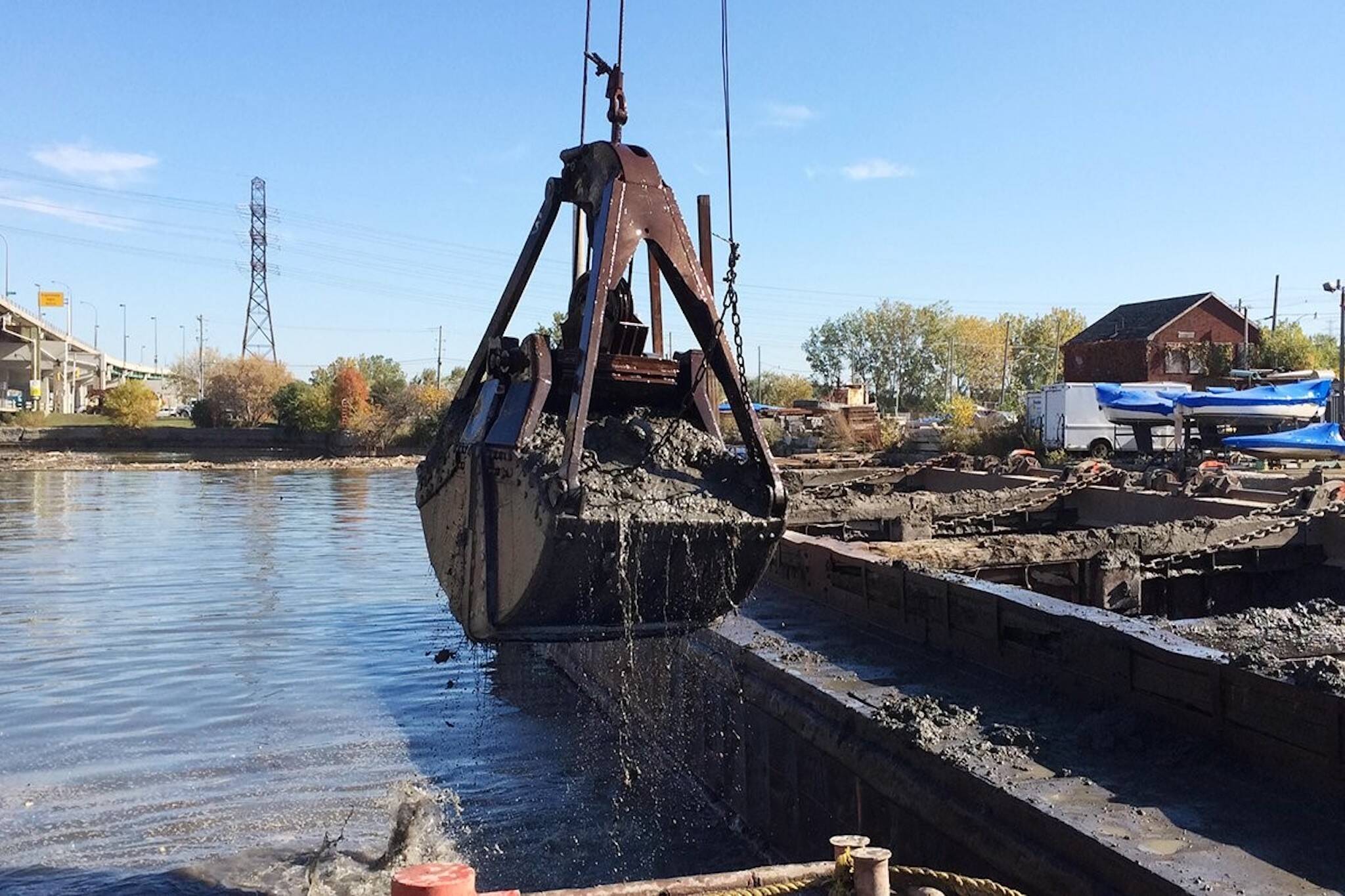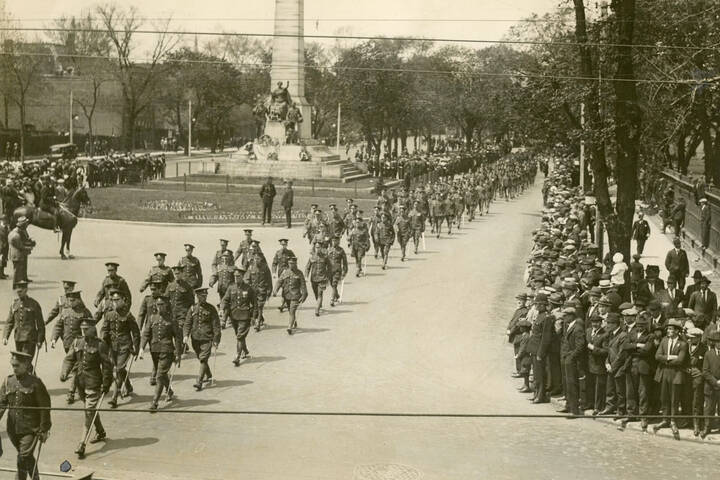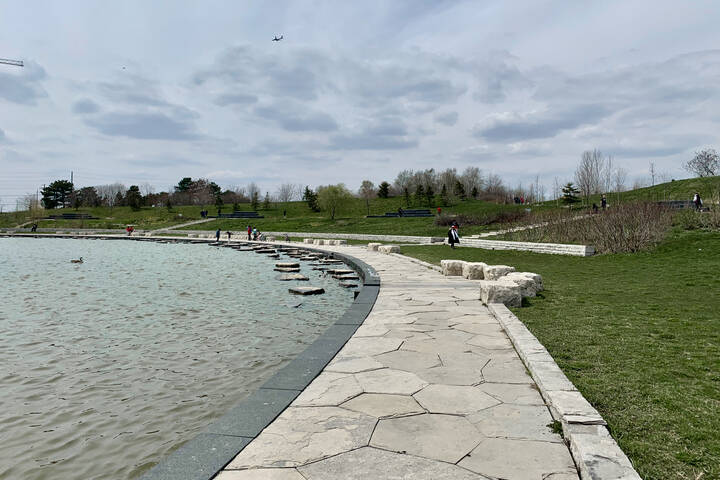
Toronto has removed almost 4 million cubic metres of gunk from a polluted waterway
After dredging the Keating Channel for nearly a century, PortsToronto has managed to remove over three million cubic metres of gunk and debris from the polluted waterway.
Every year, thousands of tonnes of sludgy sediment build up in the area where the Don River empties into the Keating Channel in the city's Port Lands area.
#DYK the @PortsToronto Works Department has been dredging the Keating Channel for 98 years?
— PortsToronto (@PortsToronto) March 9, 2023
Resulting in a total of 3,832,581 cubic metres of dredged material to date & still counting! Dredging occurs annually to prevent flooding & maintain safe navigational depth for boaters. pic.twitter.com/I2yDoimoZm
PortsToronto has managed to remove exactly 3,832,581 cubic metres of that sludge to date. For context, the Rogers Centre's volume is around 1.6 million cubic metres, meaning the port authority has pulled out enough debris to fill two and a half of the massive domed stadiums.
If the gunk is not removed regularly, the build-up could cause the river to back up and flood, and gross debris could spill into Toronto's harbour.
The debris should be less of an issue once Waterfront Toronto and the City of Toronto improve and rehabilitate the mouth of the Don River.
The project, called the Port Lands Flood Protect (PLFP) project, is one of the biggest infrastructure plans in Toronto's history and is set to transform the existing mouth of the Don River, including the Keating Channel into a healthier river outlet.
By 2024, the project will create a new urban island with parks, a new coastal wetland, and extensive habitats for wildlife.
PortsToronto
Latest Videos
Latest Videos
Join the conversation Load comments







